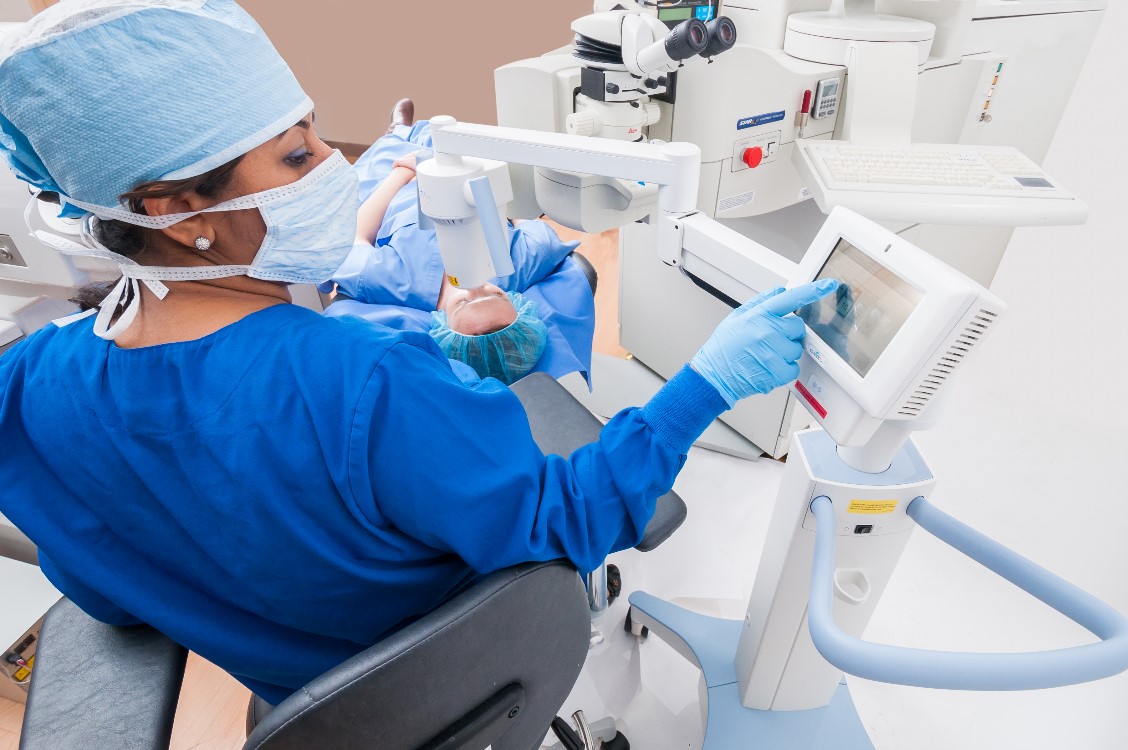Keratoconus is an eye condition in which the typically round dome-shaped cornea progressively thins and weakens, causing the development of a cone-like bulge of the cornea. Unless treated appropriately, this bulging worsens over time and can result in significant visual loss and may eventually require corneal transplantation.
https://upload.wikimedia.org/wikipedia/commons/3/31/Keratoconus.svg
Corneal crosslinking is a minimally invasive outpatient procedure that can prevent the progression of keratoconus as well as corneal thinning following laser eye surgery. It uses ultra-violet (UV) light and riboflavin (vitamin B2) eye drops to stabilize the cornea. At Foothill Eye Institute, we are proud to be one of the few eye care centers in the USA to offer this exciting treatment and we use the first and only FDA approved system available for the treatment of progressive keratoconus and corneal thinning after LASIK or other refractive surgery.
https://upload.wikimedia.org/wikipedia/commons/9/90/Cross-linking_procedure%2C_UV_light_source.jpg
There is occasionally some discomfort or foreign body sensation during the immediate recovery but usually not during the treatment. Immediately following treatment, a bandage contact lens is placed on the surface of the eye to protect the newly treated area and your eye doctor will give you a prescription for pills to take to minimize any discomfort.
The discomfort associated with this procedure is often described as a gritty, burning sensation and can almost always be managed with Tylenol and/or artificial tears. If pain is severe, other oral medications may be prescribed.
Although corneal crosslinking is the only proven way to prevent the progression of keratoconus, there are other ways that patients with keratoconus can be helped.
Intacs Corneal Implants are small plastic rings that can be placed in the cornea to restore a more normal shape to the cornea in patients with keratoconus. This procedure can help make wear of hard contact lenses more comfortable or even allow correction of vision with soft contacts or glasses.
For more information please visit:
http://intacsforkeratoconus.com/
https://upload.wikimedia.org/wikipedia/commons/2/2a/IntacsAfterInsertion.jpg
With corneal transplant surgery, your surgeon will replace all or part of your cornea with a healthy cornea that has been donated for this purpose. We are pleased to offer this procedure in both traditional technique as well as the latest method that uses a laser to help perform certain steps of the procedure. Your surgeon will let you know if you are a candidate for the laser assisted surgery.

2619 E. Colorado Blvd Ste 100
Pasadena, CA 91107
(626) 793-3625
210 S Grand Ave Ste 106
Glendora, CA 91741
(626) 335-0535
128 S. Montebello Blvd
Montebello, CA 90640
(626) 335-0535
1120 W. Washington Blvd
Los Angeles, CA 90015
(626) 335-0535
© 2024 Foothill Eye Institute | All Rights Reserved | Web Design by Rod Ulrich.
 Rod Ulrich
Rod Ulrich